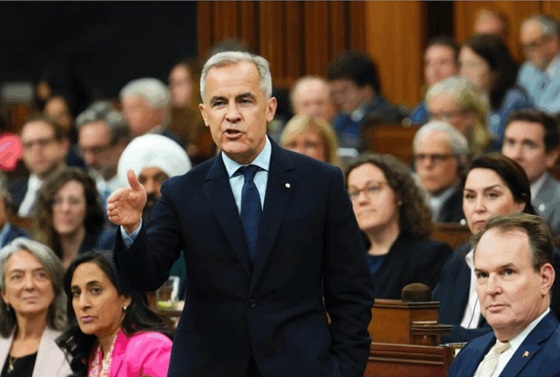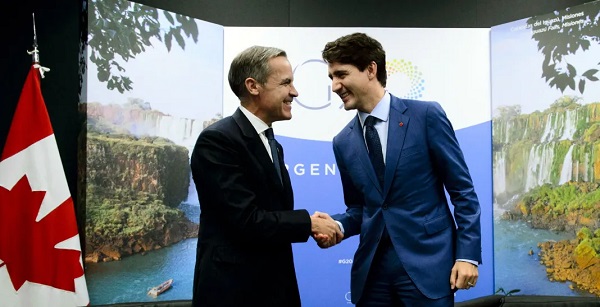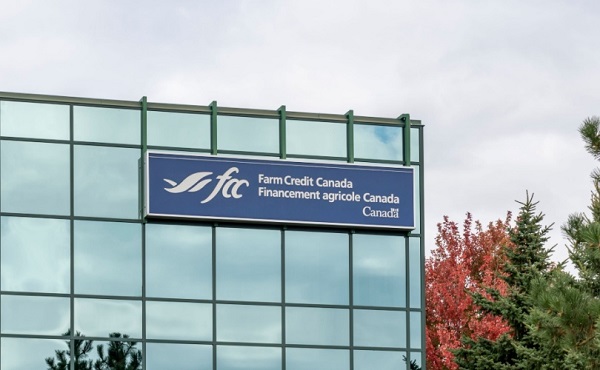Opinion
V: Remember Remember the 3rd of November

The power of speculative fiction is amazing.
Consider the examples of Brave New World, Animal Farm, 1984 and V. Their dystopian visions of our collective future was shocking, yet it was only recently that the power of the fiction was evident. Everything that was previously written is passing before our eyes.

Last year, V, was merely a brilliant film that is becoming a classic dystopian classic. This year, its power to predict the abuse of power, the misuse of the power of truth, and the power of the written and spoken word coming to fruition.
Comic book writer Alan Moore was THE brightest, most brilliant, creative writers in our modern comic book era (1980 onward). His work on Swamp thing turned what was a mediocre book and character into a must-read gothic horror.
His exploration of a country ruled by a malevolent, all powerful evil chancellor with conspiracy undertones, with absolute control over thoughts, censorship and information is becoming all too familiar. Near the end of the film, the government (under guise), has released an Avian pandemic, an airborne virus and civil war continues stoked by secret research. While V is telling his story near the middle of the film, he notes two important things; Fear is the weapon of the government AND a politician is elected who is a devil incarnate with absolute power with no empathy.
The Chancellor and his advisors also exhibit the use of government spin over a long series of events. In the film, the first bombing by V is claimed by the government to be the unscheduled Bailey demolition and the 1812 Overture just a bonus. During the narrative, the airborne virus is blamed on a Catholic Institution allegedly researching with bio warfare. Their use of government spin to divert the public from the true activities of V is a common tool in the kit of propaganda and image publicity, a practise that has descended into Virtue Signalling today and has given rise to a negative view of ‘conspiracy,’ or views that run counter to the ‘official’ story released by the powers that be to justify their responses.

The overwhelming visual in the film is that of the Guy Fawkes Mask and its symbolism. Now, we can consider that masks in our society today represent safety to some, and unwarranted governmental control to others. Complying with mask ‘regulations’ without belief in their effectiveness or complying because of a belief in their effectiveness requires both deception and faith, two sides of a coin. Another aspect of the Guy Fawkes visage is that of anonymity. In the film, thousands and thousands of masks are distributed guaranteeing wearers the ability to hide behind the truth or behind a great lie.
Let us move from fiction to ‘reality,’ and consider the situation that our world faces in 2020.
In 2019, the worlds financial and political organizations had been signalling that the economic health of the world had been decreasing and a long-term recession was possible. In early 2020, the situation was not better.
Depending on which side of the Covid 19 coin you fall on, this dreaded virus was active in mid 2019 in Wuhan and actually had been in development by the NIH and several US Universities and laboratories prior to defunding and moved to China OR it was a real virus the Chinese government released. The global players in the virus ‘fight,’ the W.H.O., The C.D.C., pharmaceuticals, investors and government health professionals laid out a ‘pandemic’ policy that included economic shut down, lockdowns, mandatory masks and a future vaccine that would save the world, even if these measures cause more damage than they are supposed to cure.
It is incredibly fascinating that after early Covid 19 mis-steps, the original scripts remain for responses despite evidence to the contrary gathered by even the W.H.O. and the C.D.C. which suggests a reversal of their earlier stances are ignored by the masses and even called ‘conspiracy’ by the main stream media that gobbled up their extreme measures. An example of this is the revised infection and mortality rates released by the C.D.C. that shows their new creation (patented by the C.D.C.) is less dangerous than a regular flu. Even the W.H.O has deemed that lockdowns and masks are not effective and has stated that, yet government policy has not reflected this voice of ‘authority.’ If we add in the growing evidence that shows increased rates of bacteriological infections and deaths in healthy individuals due to mask usage, a clear pattern has emerged, the treatment and ‘protection’ may be worse than the disease.
Meanwhile, as I have written previously, doctors and health professionals around the world including Canada have initiated legal action against governments to defend their patients from ineffective treatments. The Great Barrington Declaration signed now by more than 54,000 professionals takes issue with government response that places politics and profit before research and fact.
The Great Barrington Declaration states that:
“Covid-19 is less dangerous than many other harms, including influenza. As immunity builds in the population, the risk of infection to all – including the vulnerable – falls. We know that all populations will eventually reach herd immunity – i.e. the point at which the rate of new infections is stable…”
Yet, if world-wide professionals have enough confidence to call upon world leaders to change their policies and treatments, why do the naysayers such as Dr. Faucci have such power to dismiss a global, scientific and research based position?
With the US election rising to a crescendo this month, a factor has arisen that shows the effectiveness of yet one more tool in the tool belt of the most powerful organizations in the world: censorship. Facebook, twitter, google and other groups routinely use ‘fact checkers’ to vet posts not inline with the approved storyline. Health related stories that question Covid 19 stats, treatments and causes are routinely buried or deleted giving rise to alternate sites that have been labeled ‘conspiracy.’
In the dystopian novels by Orwell and Huxley, censorship is used extensively to control populations and films like the Matrix explore that concept. ‘Drinking the Kool aid,’ or ‘taking the blue pill,’ are phrases used to describe those who buy the accepted storylines as fact.
As an aside, the Canadian government has posted an ad looking for a ‘Story teller.’
Censorship is not merely relegated to social media and news organizations but rather it has been entrenched in constitutions around the world now by practise.
The Canadian government has Islamophobia laws in place. Some countries have anti-covid 19 ‘news’ laws proposed. Justin Trudeau, in his response to the French attack recently noted that ‘Free speech has its limits.’ I wonder who decides those limits and on what topics.
With the sheer volume of distraction news in the media today, and the ability of search engines and platforms to rank breaking stories REAL news is lost. In the US, the various broadcast news organizations have biases, and regularly practise those. Fox, CNN, TNN, ABC, the CBC, CTV and other networks routinely present half truths and ignore pressing issues and movements that test democracy and free speech.
In the film near the end, Evey and Finch, the detective are standing beside the train loaded with explosives. V is dead in the train covered with roses.
In a scene loaded with symbolism and decisiveness, she pulls the lever and sends the train towards destruction on Guy Fawkes Day.
“This country needs more than a building right now, it needs hope,” she says and the strains of the 1812 Overture rise as the flames consume the Parliament.
Theatrical, yes.
True, yes.
Today, in every country around the world we need Hope.
US Citizens need hope that the ‘building’ of political corruption is decimated. Canadian citizens need hope that our Liberal government will take control of our raging debt before we have to mortgage the Canadian Rockies to the Chinese. Western Canadians want hope that the federal government will recognize the value of our mineral resources and allow us to develop them for economic stability. Our citizens, North American, need hope to believe that we will be allowed to shop, live, worship and raise our families without onerous regulations and penalties.

There is an image of the man known as V esca
ping from the burning St. Mary’s that encapsulates the genesis of his journey and his mission. It symbolizes our present truth vs Lie, God vs Satan, Good vs evil, freedom vs control battle struggle.
V states through narration in the film, “Beneath this mask is an idea and ideas are bulletproof.”
Cut to the 1812 Overture….
International
Boris Johnson Urges Ukraine to Continue War

By Martin Armstrong
Trump’s proposal for peace in Ukraine has been met with an overwhelming condemnation from the world’s neocons. Former UK Prime Minister Boris Johnson reemerges from the shadows whenever he hears word that a war may be winding down. He played an instrumental role in persuading Zelensky not to negotiate a peace treaty with Russia when it was apparent that Ukraine could not easily win, and now, Johnson is urging Ukraine to continue the war.
“Imagine that you are Vladimir V. Putin and you are spending a calm Saturday in the Kremlin… You casually watch the television news, and you cannot help but smile at the incompetence of your opponents, at the astonishing weakness of the West. You have lost more than a million soldiers, killed and wounded, in your attempts to subdue Ukraine. You have still failed to capture more than 20 percent of the country’s territory. Your economy is faltering. And now they are talking about some new 28-point plan to end the war – and it could have been written entirely by the Kremlin,” Johnson warned.
In typical neocon fashion, Johnson wants to paint the proposal as a victory for Russia. He acknowledges millions have died, but since they are Russian, their lives do not matter. Continue the slaughter at the expense of the people.
Johnson declared that Britain was in a proxy war with Russia back in November 2024. “It has been pathetic… Let’s face it: We’re waging a proxy war but not giving our proxies the ability to do the job. For years now, we’ve been allowing them to fight with one hand tied behind their backs, and it has been cruel,” he admitted one year ago. Why would Britain feel threatened by Russia? Why would any sane leader thrust their people into a battle that is not theirs to fight?
The head of M16, Sir Richard Moore, also came out in November 2024, admitting British intelligence was discreetly fighting on behalf of Ukraine. “We cherish our heritage of covert action, which we keep alive today in helping Ukraine resist the Russian invasion,” Moore commented.
Moore and Johnson know that Russia has no incentive to invade Europe, especially Britian. There is absolutely nothing for Putin to gain. Europe, on the other hand, has everything to gain through conflict with Russia. They see Ukraine as the ultimate entryway into Russia
War is a great way to default on debts. You get to form a new government, and they always disavow the debts of the previous government. Europe has been committing economic suicide. Between the COVID-19 Lockdowns, the NET-ZERO Climate Change, and then the sanctions on Russia that doubled their fuel costs, you could not ask for a more brain-dead group of politicians who have ZERO comprehension of even how the economy functions.
Plain and simple—Russia invaded due to the West’s failure to honor the Minsk Agreement. The neocons disregard the proposal entirely and conveniently disregard the original signed agreement when discussing conceding territory.
“The document offers Ukrainians not only to give up any attempts to reclaim Crimea or Donbas, but also to cede vast territories, including about 250,000 Ukrainians whom the Russians do not even control. Of course, you knew your negotiators would try something like that. But you never believed anyone would take this seriously. You can’t believe that President Trump would back this plan, because it is a complete betrayal of Ukraine,” Johnson continued in his recent writing.
LET THE PEOPLE VOTE! The ethnically Russian people living in Ukraine have been unable to decide on their leadership. Zelensky outlawed their religion and language. Everyone believes they are protecting the people in these regions from the other side, but only one side is open to learning the people’s wishes. The 28-point plan saves the PEOPLE of both Russia and Ukraine. Russia cannot abandon the war without guarantees that NATO will back down and Ukraine is merely an EU puppet. Zelensky now has two days to decide whether he is willing to destroy his nation for the neocons.
Daily Caller
EXCLUSIVE: Here’s An Inside Look At The UN’s Disastrous Climate Conference


From the Daily Caller News Foundation
By Audrey Streb
The United Nations’ annual climate conference concluded Saturday, and some critics in attendance told the Daily Caller News Foundation that it was a chaotic affair.
After Thursday’s fire forced an evacuation and temporarily halted the talks, COP30 was prolonged by an extra day. Corporate media outlets and green groups critiqued the final agreement reached on Saturday, arguing that it did not do enough to restrict carbon emissions. The environmental groups claimed the resolution departed from COP28’s declaration which called for an end to fossil fuels.
Hosted in Belém, Brazil, COP30 provoked backlash after developers razed the Amazon rainforest ahead of the climate talks and China worked to seize the spotlight in America’s absence. Craig Rucker, co-founder and president of the conservative nonprofit known as the Committee for a Constructive Tomorrow,(CFACT) told the DCNF that this year’s UN climate talks were especially chaotic and disorganized.
Dear Readers:
As a nonprofit, we are dependent on the generosity of our readers.
Please consider making a small donation of any amount here.
Thank you!
“I’ve been to 27 of the 30 conferences. … What you see on the ground is just how chaotic it’s gotten. There was a certain chaos in the past, but this was particularly disorganized because they picked a venue that I think was unsuited for all the delegates that were coming in,” Rucker told the DCNF in an interview. “They wanted to emphasize the rainforest, yet hypocritically, they’re chopping them down to accommodate delegates flying in on private jets.”
The UN did not respond to the DCNF’S request for comment.
Rucker and Marc Morano, who publishes CFACT’s ClimateDepot.com, ventured into the Amazon rainforest to investigate the four-lane highway initially reported by BBC in March. Rucker told the DCNF that Brazil was “still cutting and burning. We heard the chainsaws ourselves, and this is something they [the Brazilian state] try to keep [quiet].”
The highway, known as Avenida Liberdade, was shelved multiple times in the past due to environmental concerns but revived as part of a broader push to modernize Belém ahead of COP30, according to the outlet. State officials say the development efforts will leave a lasting legacy, including an expanded airport, new hotels and an ungraded port to accommodate cruise ships.
The Brazilian state denied that the highway was built for the climate conference, noting that plans for the road were underway as early as 2020 — well before Brazil was selected to host COP30, Reuters reported in March.
President Donald Trump sharply criticized the conference for deforesting portions of the Amazon to ease travel for environmentalist attendees. The U.S. did not send an official delegation this year.
Democratic California Gov. Gavin Newsom and Democratic Rhode Island Sen. Sheldon Whitehouse attended the talks, where they denounced the Trump administration’s energy policies and absence.
A top United Nations official reportedly directed Brazilian authorities to address concerns including leaky light fixtures, sweltering heat and lackluster security at the conference, according to Bloomberg News. Days later, the fire broke out.
Morano also documented water pouring from vents, and Rucker told the DCNF that attendees were not allowed to flush toilet paper as the venue “didn’t have a septic system.”
Rucker also recalled what he described as elitism, noting that delegates were in the “blue zone” while other attendees and indigenous groups were relegated to the “green zone.”
“The blue zone is where the official delegates go, the people that are from Spain, Portugal, Brazil. … And these are the people that make the decisions,” Rucker said. “The indigenous people, they say, don’t have a voice allowed in there. That’s partially why they crashed it.”
Though COP30 did host several events featuring indigenous voices, some native groups stormed the COP30 venue the first week, demanding their voice be heard by the UN.
Rucker told the DCNF that China seemed to have become a “new leader” on the environmentalism and green energy front at the climate conference, though the oriental nation is “pumping out with two coal plants per week.”
Recent media reports have hailed China as a giant in building out “renewables,” though China is far from dependent on intermittent resources like solar and wind as it also churns out new coal plants and is the world’s top emitter.
“They genuinely looked at China as the world leader on climate change,” Rucker noted, branding it as “totally bizarre.”
Rucker recalled that upon the entrance of the “blue zone,” there was a “very impressive Chinese booth.”
Additionally, a statue demeaning Trump stood outside COP30, according to Reuters, as well as a horned jaguar-dragon hybrid statue with its hands gripping the globe. The fanged construction purportedly represented China and Brazil partnering to protect the rainforest.
“The statues are purely political statements: one symbolizes how communism is alive and well in Brazil and China, and the other is a misguided attempt to shame or critique Trump,” Director of the Arthur B. Robinson Center on Climate and Environmental Policy at The Heartland Institute Sterling Burnett told the DCNF. “Trump’s promotion of fossil-fuel development and broader use — especially encouraging developing countries to tap into affordable energy — will do more to help children in poor countries than all the climate agreements and green energy scams combined.”
-

 Crime2 days ago
Crime2 days ago‘Modern-Day Escobar’: U.S. Says Former Canadian Olympian Ran Cocaine Pipeline with Cartel Protection and a Corrupt Toronto Lawyer
-

 Health2 days ago
Health2 days agoCDC’s Autism Reversal: Inside the Collapse of a 25‑Year Public Health Narrative
-

 Crime2 days ago
Crime2 days agoCocaine, Manhunts, and Murder: Canadian Cartel Kingpin Prosecuted In US
-

 Health2 days ago
Health2 days agoBREAKING: CDC quietly rewrites its vaccine–autism guidance
-

 Alberta1 day ago
Alberta1 day agoPremier Smith explains how private clinics will be introduced in Alberta
-

 Opinion2 days ago
Opinion2 days agoLandmark 2025 Study Says Near-Death Experiences Can’t Be Explained Away
-

 Focal Points2 days ago
Focal Points2 days agoSTUDY: TikTok, Instagram, and YouTube Shorts Induce Measurable “Brain Rot”
-

 Censorship Industrial Complex1 day ago
Censorship Industrial Complex1 day agoUK Government “Resist” Program Monitors Citizens’ Online Posts








